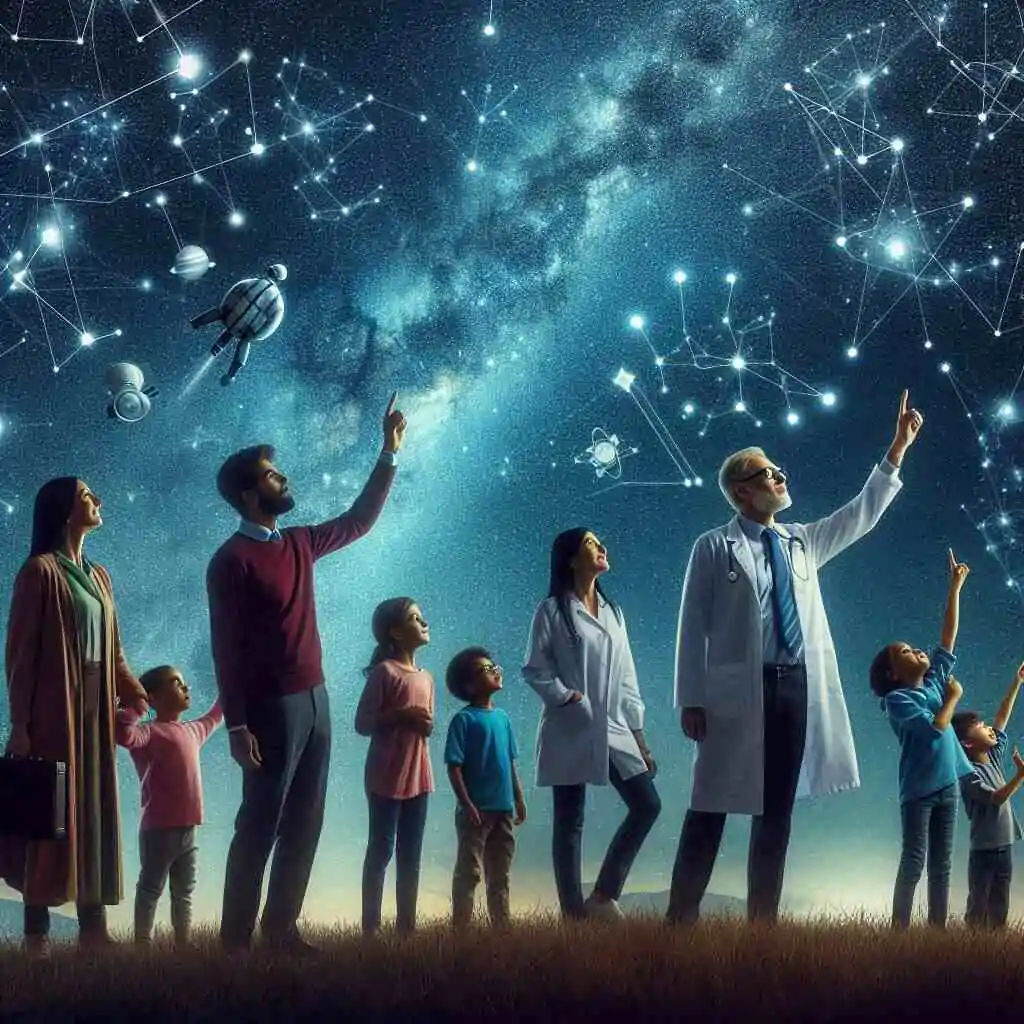Stars-923 is more than just a mathematical notation; it marks an important milestone in the development of astronomy and cosmology. Our exploration of this fascinating topic aims to provide valuable information to experts and enthusiasts looking to expand their knowledge. Some celestial bodies in the vast expanses of the Universe spark endless curiosity among scientists and space enthusiasts alike.
What is Stars-923?
Stars-923 covers a diverse category of stars, each with unique cosmic attributes and functions. While “Stars-923” may be of a specific class or serve as a symbolic designation, these stars stand out for their brightness and the valuable insight they offer into stellar phenomena. They play a crucial role in our understanding of the mechanics of the universe.
Stars-923 Birth
Stars-923’s life cycle begins in a stellar nursery—huge, dense clouds of gas and dust. These regions are vital for star formation, providing the necessary materials and conditions. Gravity causes gas and dust to clump together to form protostars. As these protostars accumulate mass, they heat up, triggering nuclear fusion and marking the birth of a new star.
Stellar Nursery
Star nurseries are the cradle of Stars-923. These regions, rich in elements needed for star formation, help create new stars. Gas and dust combine under the influence of gravity to form protostars, which then develop into full-fledged stars as they progress through the stages of their development.
Nuclear fusion process
At the core of every 923 star lies nuclear fusion, which is the driving force behind its luminosity. This process involves the fusion of hydrogen atoms into helium, releasing a significant amount of energy. This energy not only makes stars shine, but also maintains their stability by balancing gravitational forces and radiation pressure throughout their life cycle.
Classification of stars-923.
923 stars can be classified into several types based on their size, temperature, and spectral properties, including main sequence stars, giants, and dwarfs. These classifications help astronomers understand the behavior and evolution of stars.
Main sequence stars
Main sequence stars are the most common type among Star-923. They spend most of their lives converting hydrogen to helium in their cores. During this phase, they achieve stability by balancing gravitational pull and radiation pressure. Main sequence stars vary greatly in size and temperature, giving rise to different subtypes within this category.
Red Giants
As 923 stars age and exhaust their hydrogen fuel, they enter the red giant phase. The star’s outer layers inflate as its core contracts. This increase in size and luminosity signals a transition from a main sequence star to a red giant, the precursor to the final stages of a star.
Death of Star-923
The final stage of Star-923’s life is determined by its mass. Smaller stars, like our Sun, shed their outer layers to become white dwarfs. Larger stars may experience supernova explosions, which can lead to the formation of neutron stars or black holes.
White Dwarfs
For the smallest 923 stars, the final stage is usually the creation of a white dwarf. This compact, dense remnant stops nuclear fusion but continues to generate heat for billions of years. White dwarfs represent the final stage for many stars, marking the end of their stellar evolution.
Neutron stars and black holes
The massive stars that end their lives in supernova explosions can leave behind neutron stars or black holes. Neutron stars are extremely dense remnants with a mass comparable to the mass of the Sun, but compressed into a small sphere. Black holes, on the other hand, are regions with such strong gravity that not even light can escape. Both represent extreme results of stellar evolution.
Star-923 in the galaxy
Stars play a vital role in the galaxy. They contribute to the formation of planetary systems, disperse heavy elements through supernovae, and influence the birth of new stars. The presence of stars is integral to the structure of the galaxy and the continuous cycle of star creation and destruction.
Elements created by stars-923
Stars are responsible for creating and dispersing many of the elements necessary for life. These stars create elements such as carbon, oxygen, and iron through nuclear fusion and supernovae. These elements are necessary to form planets and support the emergence of life. The material ejected by Stars-923 enriches the interstellar medium, favoring the formation of new stars and planetary systems.
Observing Stars-923
Astronomers are using a variety of instruments to study Stars-923 and its surroundings. Telescopes, spectrographs, and observatories provide detailed information about the composition, temperature, and behavior of these stars.
Telescopes and Stars-923
To observe Stars-923, ground-based and space-based telescopes are needed. These instruments capture the light from distant stars, allowing scientists to analyze their properties. Space telescopes, such as the Hubble Space Telescope, provide clearer images and avoid atmospheric interference, resulting in more precise observations.
Spectroscopy and Stars-923
Spectroscopy is a technique used to study the light emitted by Stars-923. By studying the spectrum of light, scientists can determine the composition, temperature, and other properties of a star. This involves dispersing light into its component colors and studying the resulting spectrum to gain insight into the star’s properties.
Cultural Significance of Stars-923
Stars have had significant cultural significance throughout history, inspiring mythology, art, and scientific exploration. They served as navigational aids, symbols of hope, and metaphors for the human experience.
Stars-923 in Mythology
Stars-923 have figured prominently in the mythology and folklore of various cultures. They are often regarded as deities or spiritual guides, reflecting humanity’s deep connection to the cosmos and fascination with celestial bodies.
Conclusion
Stars-923 offers an in-depth look at the universe, from its formation in stellar nurseries to its impact on the galaxy. As exploration continues, these stars continue to inspire and illuminate, deepening our understanding of the cosmos. Each discovery about Stars 923 brings us closer to understanding the universe and our place in it.










